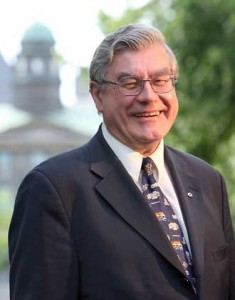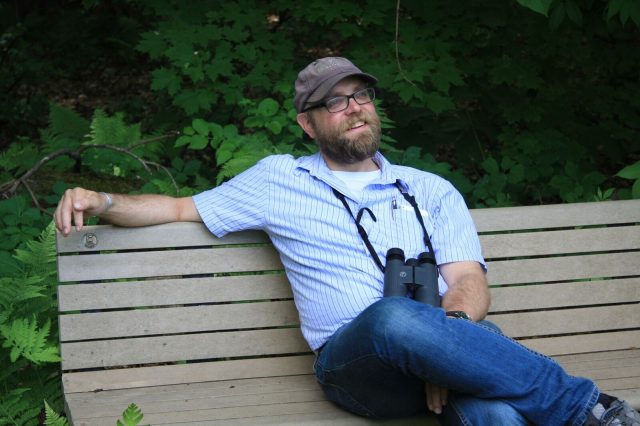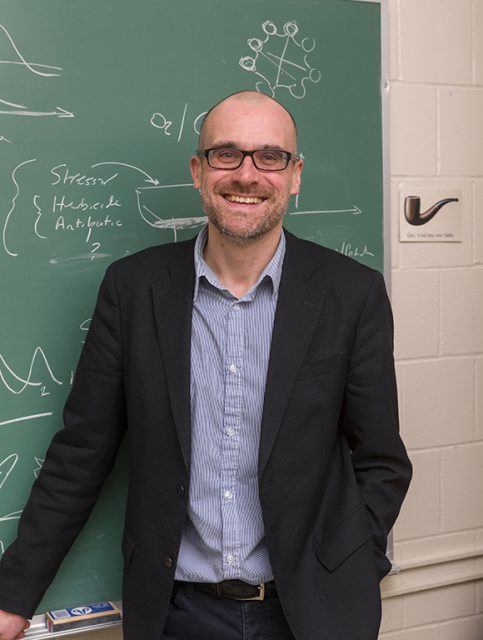History and policy
The Paris Agreement was signed into force at the beginning of this month, with the United States, China, and the European Union all pledging to introduce the necessary policies to drastically reduce carbon dioxide emissions by 2025. Their end-goal is avoiding a global average warming increase of two degrees Celsius. But despite the success in introducing the agreement quickly, there are immense obstacles that it will face to turn its promises into reality. For one, there’s no binding enforcement mechanism to measure or limit emissions. But even if countries do follow through, the United Nations Environment Program has warned that the Agreement’s targets to cut emissions will still result in three degrees Celsius of warming.
In another blow to environmental protections, Donald Trump, a vehement climate change denier, was elected as the next President of the U.S., the country with the second highest greenhouse gas emissions in the world. He has promised to cancel the United States’ plan to follow through with the Paris Agreement. His appointed Environmental Protection Agency (EPA) leader will be Myron Ebell, another climate change denier, and his Department of Energy leader will be Mike McKenna, a Republican energy lobbyist. Trump has plans to block Obama’s newly introduced Clean Power Plan, remove regulations on protecting streams from coal mining, and remove wetland protection policies.
This isn’t the first time a U.S. president has stuck his fingers in his ears and hummed loudly when faced with climate change science. Ronald Reagan, U.S. President from 1981 to 1989, was a critic of environmental movements of the time and denied the possibility of climate change, despite NASA scientists already predicting the impact of carbon dioxide emissions on global temperatures from 1981 onwards. As soon as he was elected, he over-rode most of the Carter executory environmental agenda, purposefully delayed and interfered with EPA assessments, and excluded liberal or environmentalist scientists from federal scientific advisory panels – all of which led to a mass resignation of EPA officials in 1983. His denial of the threat of climate change lulled many in the U.S. into a false sense of security, and funding for environmental research suffered. The echoes of his arguments can still be heard today throughout the Republican party. Following in Reagan’s footsteps, a Trump presidency will reinforce public skepticism of climate change science and be a tremendous barrier to clearheaded environmental policy and transitioning to clean energy.
In light of Trump’s election, it’s more important than ever to present the facts on climate change – not just as abstract degrees or emissions volumes, but in terms of concrete implications. Climate change will, and does, impact all of us, but before we understand how it impacts humans, we need to take a look at how it impacts our environment – from honey bees to ocean currents. I talked to five McGill professors whose research intersects with climate change studies about the Paris Agreement, their visions for a more environmentally responsible future, and the effects of climate change on our atmosphere, oceans, and wildlife.

Jaye Ellis is an Associate Professor at McGill University in the Faculty of Environment and the Faculty of Law. Her current research focuses on social systems and transnational policy-making regarding environmental degradation.
The McGill Daily (MD): Do you consider the Paris Agreement an achievement for environmental lawmakers and agencies around the world? How effective do you think the U.N. will be at ensuring countries like China can successfully push laws to curb their emissions?
Jaye Ellis (JE): It is an achievement, yes. The process moved remarkably quickly, particularly compared to the experience with the Kyoto Protocol. Of course, significant compromises were made in order for us to get here. The quick response may be due at least in part to a sense on the part of many states that these obligations will not have much bite, but it could also be partly due to a growing sense of urgency.
I believe that the U.N. has some tools that it can use to push for implementation of climate laws and policies, but my attention is focused on other entities: civil society organizations, local (provincial, municipal) governments, and firms and industry associations. I believe that real progress will be achieved through the efforts of these actors more than [by] international organizations and national governments.
MD: Do you think the threats of climate change is being taken more seriously by the public and lawmakers? Will we see changes under Trudeau to Canadian environmental policy, like higher carbon taxes and subsidizing clean energy?
JE: Climate change denial is firmly behind us at the level of public discourse in this country. That battle has been won. What remains is to convince members of the population, first, that meaningful change can be brought about, and second, that vulnerable segments of the population will not have to bear a disproportionate burden either from climate change itself or from measures to reduce emissions and enhance [carbon] sinks. As I see it, Trudeau has no choice but to take climate change seriously and to forge ahead with measures to combat it. His government needs to create the conditions for a range of experiments in law and policy, which is not going to be easy, as it will involve taking risks and making bold moves – something that Canadians are not known for.
MD: How can countries like India comply with the Paris accord without limiting their means of economic development and expansion? Is it really possible to lower gas emissions worldwide while at the same time having to accommodate a growing standard of living for an exponential human population growth?
JE: Countries like India will need to see that a sustainable path to development is available. […] It is possible, but it will require decisive action. We will need to be able to have difficult conversations about genetically modified crops, nuclear energy, economic incentive structures, public-private partnerships and adaptations. And actors around the world are going to need to come to those conversations with open minds, prepared to change their opinions. None of this is easy, but it is necessary, so we are going to have to find a way to do it.
MD: How do environmental lawmakers and agencies deal with situations where science on which the environmental laws and regulations are founded upon are questioned or denied by executive branches of government – such as in the case of a Trump presidency?
JE: National governments are, by and large, followers, not leaders, on this issue. As distressing as the prospect of a Trump presidency is, in every possible respect, he would have little capacity to draw policy experiments in jurisdictions like California to a halt. Regardless of who our political leaders are, we cannot wait for them to get their acts together, and increasingly, other actors are recognizing this. Given the scope, scale, and complexity of the problem, it is difficult to think of a societal institution, public or private, that does not have something to contribute.
Atmosphere and oceans
250 million years ago, the Earth experienced the greatest mass extinction event known to us: The Great Dying. 95 per cent of marine species and 70 per cent of all life on Earth perished during this period, largely due to great volcanic eruptions in Siberia which, for about a million years on and off, released massive amounts of carbon dioxide and sulfur into the air. The chemicals acidified and dissolved into the oceans, decreasing the surface pH of oceans by 0.1 for an estimated 10,000 years.
In comparison, studies show that the oceans today have also fallen by 0.1 in pH since the Industrial Revolution – which was only 100 years ago. The lead author behind the study, Matthew Clarkson, said that the comparable pH drop was a “massive warning and a worst case scenario, if we carry on with fossil fuels. Diversity didn’t recover for 5 million years.”
In the last century, ocean levels have risen by twenty centimetres, chalked up to melting glaciers and thermal expansion of existing bodies of water. In the Antarctic, ice shelves the size of small countries are rupturing and disintegrating. If greenhouse emissions continue at their present rate, sea levels will eventually rise by 25 meters over the next 500 to 1,000 years, submerging coasts and displacing what would today be 1.2 to 1.5 billion people. Other ‘business as usual’ models are predicting that by 2100, sea levels will rise between one and two meters, flooding U.S. coastal cities like Boston, Miami, New Orleans, and New York City. Other more ‘pessimistic’ estimates, where greenhouse gases continue to increase at a higher rate than today, predict a five to seven metre rise – enough to submerge London by 2100.

Lawrence Mysak is director of the Earth System Modelling Group in the Department of Atmospheric and Oceanic Sciences. His research focuses on modeling carbon cycles and oceanic current oscillations of past time periods to better understand long term climate variability and change.
MD: Is limiting the global temperature average increase to two degrees or lower by 2030 really possible?
Lawrence Mysak (LM): It’s going to be very difficult, especially with countries [which] have really high rates of population growth and are striving for economic development and reach high standards of living. I’m not optimistic about achieving the set goal but I’m hoping for the best. The fastest we can transition our sources of energy and forms of transport the better it’s going to be.
MD: Are there any possible innovations to curb gas emissions that you think would work? Any that you are not a fan of?
LM: Geothermal power is very promising; it circulates water from about 200 metres below the Earth’s surface, where there is quite a bit of heat, and you can use it for both heating and cooling. The initial investment is not cheap, but once you get it going it’s really efficient and clean in the long run for energy consumption. Windmills can be noisy and affect some local ecosystems and take a lot of space. Another problem with windmill and solar power is storing the energy and transmitting it: a surplus of energy is great but storing and transporting it is not as easy as it sounds. […] Using aerosol particles in the atmosphere to reflect radiation has potential but can damage the ozone layer. Iron fertilization enabling algal blooms to absorb carbon dioxide into the ocean is interesting but ultimately could have very negative effects on ocean wildlife and carbon cycles.
MD: Is there any specific part of your research that you are excited about or find really important?
LM: I’m writing a chapter about the Thermohaline circulation in the Atlantic Ocean for a book. Thermohaline circulations are the current natural water flow patterns which transport heat through the oceans. Currently, we have warming flows in the Atlantic coming up from the tropics upwards past North America to the poles. When the warm water reaches the poles, it releases warmth into the air and cools, becoming denser and sinks. This creates an overturning circulation where cooling water also travels the same general path as the warm water in the opposite direction. This circulation brings heat to Eastern North America and Western Europe. If the Greenland ice sheet melts, which is what is happening right now, the circulation would slow down and eventually stop entirely. Those areas I just mentioned which are being warmed by the circulation would then become much colder, but it would not contribute to the overall average temperature of the Earth. This circulation has not always existed, and when it did not, the oceans were five degrees colder than today.
Pollinators & honey bees
During the winter of 2008, 60 per cent of honey bee hives were lost to Colony Collapse Disorder (CCD) – and the scariest part is that we still don’t know exactly why it’s happening. Many factors are believed combine to contribute to CCD, climate change being one of them. Honey bees are not the only species experiencing this – wild bumblebees are also being decimated for unknown reasons. Honey bees are not only necessary for human food security and large-scale agriculture, they’re also essential for the vast majority of plant life, providing us with breathable oxygen and food for herbivores and omnivores.
To compound an already-dire situation, many entomologists and plant scientists are predicting that increased global temperatures will alter the timing of environmental cues for both pollination and flowering. An offset synchronization could spell disaster for non-insect pollinators like hummingbirds, who also depend on precise timing to migrate and feed in particular areas.

Christopher Buddle is an entomologist in the Faculty of Natural Resource Sciences at McGill’s MacDonald campus and is also the Associate Dean of Student Affairs. His research focuses on community ecology, food webs, and biodiversity of arthropods in the Arctic.
MD: Multiple factors, including climate change, are believed to provoke CCD. Has any other pollinator acted this way in the past or in the present? How serious is the situation going forward into the next decade?
Christopher Buddle (CB): Indeed, my understanding is that multiple factors are implicated. […] To me, there needs to be more focus on the conservation of wild bees, and attention to preservation of habitats that these species need is critically important to pollination. It’s hard to predict the next decades, but I will state that conservation of insects needs to be a higher priority, notably for species that are involved in key ecosystem services: pollinators, but also (for example) species that are important predators for pest species.
MD: Is it possible that, because of climate change, plants could start to flower out of sync with some of their pollinators? Is there any evidence from past natural warmings or coolings of the planet that pollinators are well-suited to adapt to these changes in cues?
CB: I can’t speak on time scales of thousands of years; however, we can look to shorter-term changes in response to changing climates. […] There is a study published this year that describes temporal overlap between plant flowering and pollination are shrinking in the Arctic as it warms. This work points to the need for careful ecological monitoring in our most fragile ecosystems so that we can properly assess thresholds of change, and implications for critical ecosystem functions.
MD: Insects make up the majority of terrestrial biomass and biodiversity of the planet. What would happen, were insects to lose an immense amount of their biodiversity through a mass extinction event?
CB: To put it bluntly: arthropods (insects, spiders and their relatives) are critical to our very survival, and mass extinction would mean collapse of critical ecosystem functions upon which we depend. Now, that being said, arthropods have been around for millions of years, and are highly adaptable, so I don’t predict ‘mass extinctions’ as much as I might predict a homogenization of the fauna (e.g., increases in invasive/introduced species at the expense of native fauna), or major shifts in distributions of some species. This has obvious implications for us in the realm of human health and wellbeing, and pointing to insects as vectors of disease is one of many examples.
Ecology and biodiversity loss
Many wildlife population ecologists believe that we have now entered the sixth mass extinction event on planet Earth. A new study from Stanford has found that species are going extinct as quickly now as they were when most dinosaurs died out, 66 million years ago.
The biggest culprits are land clearing and habitat fragmentation for agriculture and urban expansion, introduction of invasive species, ocean acidification, and chemical toxins that are poisoning ecosystems and waterways. Many of the mammal species under threat, like gorillas, elephants, rhinos, tigers, wolves, and bears, are “keystone species.” Removing keystone species will create chain reactions known as extinction cascades, resulting in the extinction of other species.

Andrew Gonzalez is a professor in the Department of Biology and is the Canada Research Chair and the Director of the Quebec Centre for Biodiversity Science. His research focuses on ecosystem ecology and specializes in causes and impacts of biodiversity loss.
MD: What areas of the world do you think will have the hardest time combating loss of biodiversity and extinction cascades?
Andrew Gonzalez (AG): Threats to biodiversity, such as climate change or habitat loss, are not evenly distributed across the world. Some places are experiencing faster rates of warming or more extreme weather events (fluctuations) than others. Similarly, some parts of the world are experiencing very high rates of habitat loss. Those locations where multiple threats exist simultaneously will have the hardest time combating the loss of biodiversity. Areas most at risk include the tropics, especially South America and Central Africa where rates of habitat loss have been high. […] Species inhabiting highly human-transformed landscapes often have little remaining habitat and so habitat fragmentation affects their ability to move from habitat to habitat to evade threats and shift their ranges poleward under climate change. It seems that many northern species may be struggling to shift their ranges northward (see recent example [of] bumblebees in Canada).
The bottom line is that the threats occur worldwide and they vary in their form and intensity. Biodiversity is expected to change dramatically over the coming century both because of extinctions and the human-caused introductions of exotic species. Combating species loss requires urgent action, whilst we still have a window of opportunity. This must involve curbing climate change, but also mitigating the impacts of habitat loss and fragmentation. It is the cocktail of threats that is deadliest.
MD: Studies are concluding that the rate of extinction worldwide is close to the rate of extinction faced by the dinosaurs during the last mass extinction event. Are we essentially entering the sixth mass extinction event?
AG: Estimates of global rates of species extinction are indeed ten to a hundred times the ‘normal’ background rate observed in the fossil record. These elevated rates are consistent with a mass extinction event, but we have not yet lost the number of species consistent with past mass extinctions in which over 60 per cent of species went extinct. Since 1600, an estimated 906 species have gone extinct globally […] which is roughly 0.01 per cent, assuming ten million species on Earth (note we don’t know exactly how many species there are on Earth). We talk of a sixth mass extinction because if currently high rates of extinction continue for the next few centuries then we will reach those very high levels of species extinction seen in past mass extinction events. Conservation biologists are calling for action now to curb these extinction rates. We have a window of opportunity before climate change compounds the negative impacts of other human causes of extinction.
